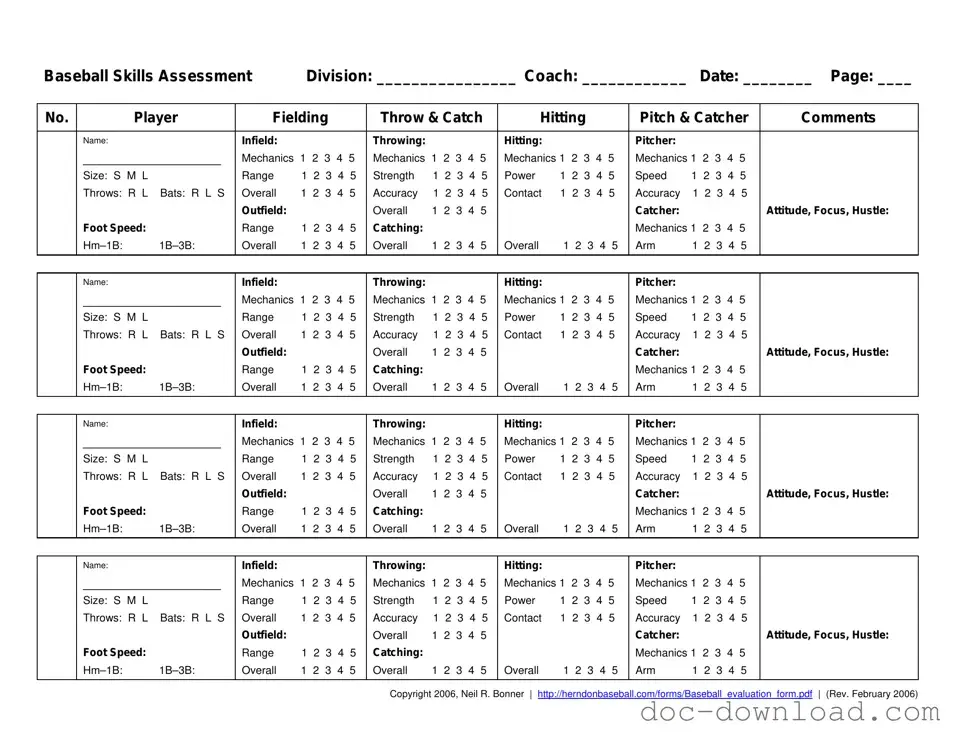The Baseball Skills Assessment form shares similarities with the Player Evaluation Form used in various sports. Both documents aim to assess a player's abilities across multiple skill sets. They typically include categories such as offense and defense, allowing evaluators to score players on a scale. This structured approach ensures that coaches have a comprehensive understanding of a player's strengths and weaknesses, which aids in team selection and development planning.
In the realm of legal documentation, a thorough understanding of various forms is essential, much like the evaluations in sports. Just as coaches assess skills using structured systems, individuals managing their affairs must consider the comprehensive authority granted by a Georgia General Power of Attorney form. This document allows for effective decision-making, akin to how evaluations guide performance in athletics. For more information on the necessary documentation, you can visit Georgia PDF Forms.
Another comparable document is the Athletic Performance Assessment. This form evaluates an athlete's physical capabilities, including speed, strength, and agility. Like the Baseball Skills Assessment, it uses a scoring system to quantify performance levels. Coaches can use this information to tailor training programs that enhance specific skills, ultimately leading to improved performance in competitive settings.
The Skills Development Plan is also similar in structure and purpose. It focuses on setting goals for individual players based on their assessed skills. Coaches can create a roadmap for improvement, using the results from the Baseball Skills Assessment as a baseline. This document not only tracks progress over time but also helps in identifying areas where additional training may be required.
Team Roster Evaluation Sheets provide another point of comparison. These documents are often used during team selection processes and include assessments of players’ skills and contributions to the team. Much like the Baseball Skills Assessment, they allow coaches to make informed decisions based on quantitative data, ensuring that selections are fair and based on merit.
The Tryout Registration Form is another document that complements the Baseball Skills Assessment. While it primarily serves to gather player information and consent, it often includes sections for coaches to note initial impressions or skill levels. This preliminary assessment can be useful during the tryout process, providing a quick reference for evaluating players as they demonstrate their abilities.
Additionally, the Game Performance Review is similar in that it focuses on evaluating players during actual game situations. This document captures real-time performance data, which can be compared to the skills assessed in the Baseball Skills Assessment. By analyzing both practice and game performance, coaches can gain a well-rounded view of a player's capabilities.
Lastly, the Coaching Feedback Form is relevant as it allows coaches to provide insights on players' performances throughout the season. This feedback often references the skills outlined in the Baseball Skills Assessment, ensuring consistency in evaluations. Coaches can track how players develop over time and adjust their coaching strategies accordingly, enhancing overall team performance.

